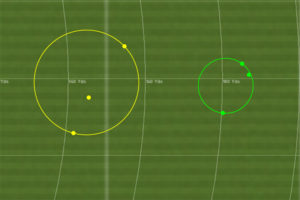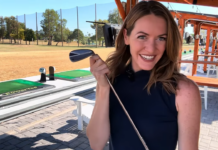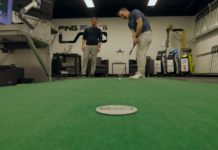Is a custom club fitting right for golfers of all abilities?
By Eric Hambleton
One of the most common comments I hear from my clients is, “I’m not good enough for custom fit golf equipment.”
My response is always the same: “You’re not good enough NOT to get fit!”
Statistics prove the WORSE a player is, the greater the effect optimized equipment can have on that player’s game. So, let’s present a strong case then why all golfers should get custom fit, and, likewise why it’s much more important for the high-handicap player to do this than they think.
By studying the shot data from over 100 personally-conducted fittings over the past six months, my conclusions are in line with other studies out there suggesting there’s a strong correlation to golfers of all abilities seeing statistical gains in their shots, with higher-handicappers seeing even greater gains.
The data set of 104 club fittings was divided into two groups: low-handicap golfers (10 or lower) and mid-to-high handicap golfers (10 or above).
Diving into the data, I found:
 The mid-to-high-handicappers gained an average of 20.1 yards of carry distance – roughly two clubs worth – while decreasing their dispersion (the frequency and accuracy of where your shots hit based on where you were aiming) by 38%. That’s an increase of 15% in carry distance.
The mid-to-high-handicappers gained an average of 20.1 yards of carry distance – roughly two clubs worth – while decreasing their dispersion (the frequency and accuracy of where your shots hit based on where you were aiming) by 38%. That’s an increase of 15% in carry distance.- The low-handicap group gained an average of 11.62 yards of carry distance and decreased their dispersion by an average of 30%, which translated to a tighter clusters of shots, more distance and better consistency.
Breaking down each statistical category to detail the main findings of hitting the ball further and closer to target, the two player groups saw the following improvements:
Ball Speed: The mid-high-handicap players saw an increase of 10.59 MPH in ball speed, or a 10% gain. This is one of the key components of launch conditions to increase distance. Low-handicap players saw an average of 5.72 MPH in increase, which, while not as large, is still a significant jump.
Launch Angle: There was a decrease in launch angle of 0.85 degrees for the mid-to-high-handicappers. While this is a small numerical gain, it pays big dividends because, in addition to the higher ball speed, they’re now adding a more-penetrating flight which is an ideal combination to maximize the efficiency of their shots. The low-handicap players saw an even larger decrease in launch angle at 1.75 degrees, which naturally creates even greater efficiency when combined with their higher ball speed.

Side Spin: Despite a wide variation in side spin from player to player for the mid-to-high group, they averaged 73 RPM of spin to the right. This equates to a small fade. With the proper shaft, head and lie angle configurations, these players saw an average of 527 RPM of spin to the left, equating to a five-to-six-yard draw. The low-handicap player group saw a similar change, moving from an average of 66 RPM of right-spin (fade) to 259 RPM of left-spin (draw).
 Backspin: There was a small increase of roughly 100 RPM in backspin from the data of the mid-to-high group. While not a huge increase, it will help this group of players hold the green with their approach shots. The low-handicap players actually saw a decrease of 777 RPM, which was mostly due to the newly-found increase in distance.
Backspin: There was a small increase of roughly 100 RPM in backspin from the data of the mid-to-high group. While not a huge increase, it will help this group of players hold the green with their approach shots. The low-handicap players actually saw a decrease of 777 RPM, which was mostly due to the newly-found increase in distance.
Peak Height: There was a big increase in the peak height of the ball flight with optimized equipment, translating into a gain of 12 feet for the mid-to-high handicap group. This reinforces the efficiency of the ball flight we see, as well as increased green-holding ability. We see a negligible increase in peak height among better players, speaking to their better ball flight to start.

Descent Angle: The mid-to-high group saw a significant increase of 3.5 degrees in descent angle, which is a huge factor in green-holding ability. Better players saw a slight decrease similar to their launch angle, which again speaks to the distance increase as a better trade-off.
Dispersion: Both players saw massive decreases in dispersion – a 38% tighter dispersion for the mid-to-high group, and 30% tighter for the better players. In addition to the massive distance increases, this is the second-most important data point to site the benefits of getting properly fit. Mathematically speaking, these improvements could account for up to almost seven more greens in regulation(!) per round for the mid-to-high group, and five more per round for the better players. A higher percentage of greens hit in regulation will increase a player’s ability to score more than any other data point.
My Conclusion?
The data doesn’t lie. Studies have shown ALL golfers with custom-fit equipment shave strokes, gain distance and perform better on the course, no matter their skill level.
So what are you waiting for? Go visit your local GolfTEC Improvement Center and see what optimized clubs can do for you!










Can I get a club fitting with my existing set
Paul, it’s very likely that you can but does depend on the clubs a bit. Some clubs can’t have their lie angles, loft, or shafts adjusted as easily as others. We’d recommend talking to your local GolfTEC Coach to see if your existing set can be adjusted based on the results of your club fitting.
Can the lie angle of the Mizuno forged clubs be adjusted?
Biensien, forged clubs often times can be adjusted depending on how much the lie angle needs to change. Your local GolfTEC Coach should be able to look at your existing set of clubs and help you determine if they can be adjusted as you need.